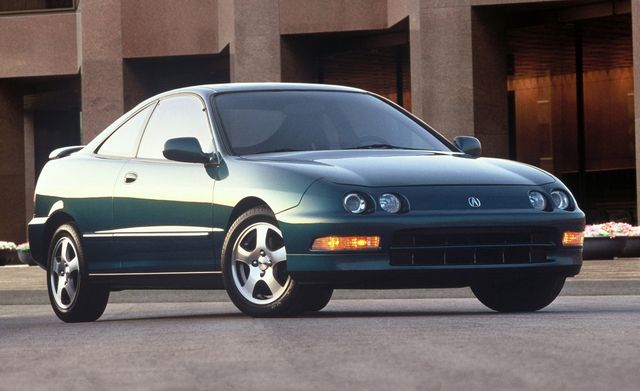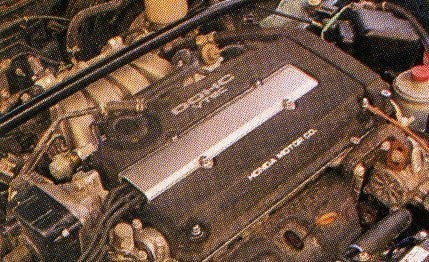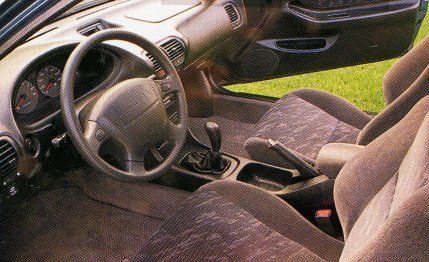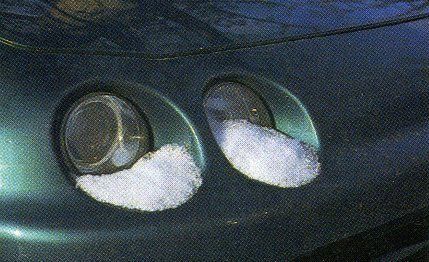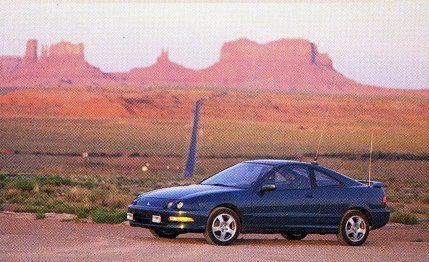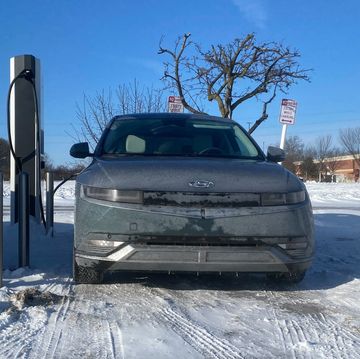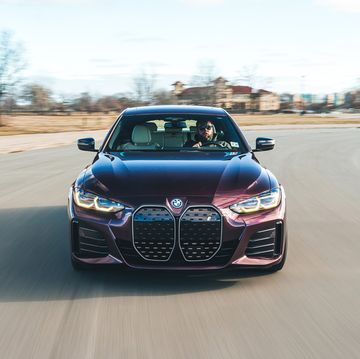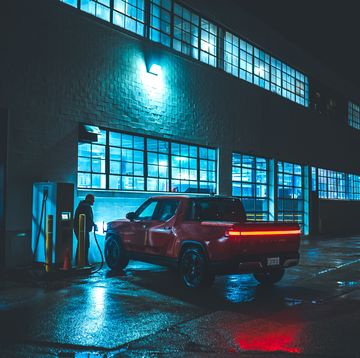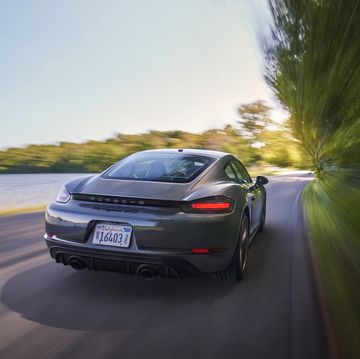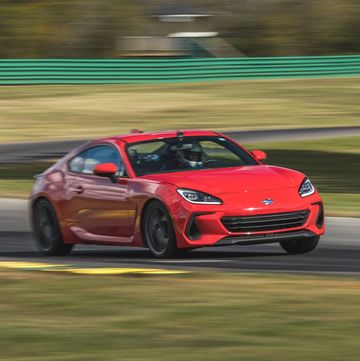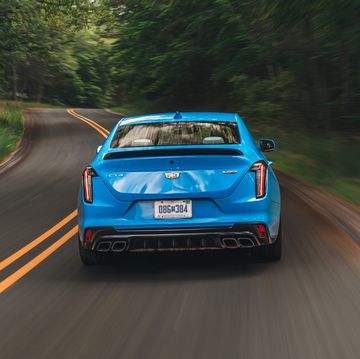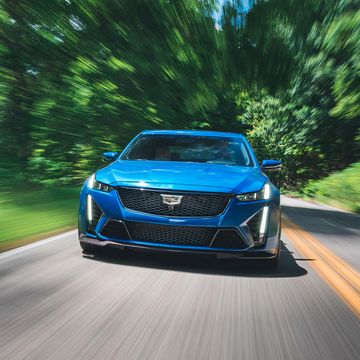From the November 1994 issue of Car and Driver.
Awright, we knew you'd write in. It was no shock here in the ice-cube quarry that is the magazine's Michigan domain. You were sure to gripe that Acura's uncanny Integra GS-R could never better other sports coupes because it was just a "glorified economy car."
That was after an Integra GS-R took first place in our June '94 "Good Sports" comparison test of seven sports coupes, winning with its all-around worth rather than speed alone. (The group also included the Eagle Talon TSi AWD, Ford Probe GT, Honda Prelude VTEC, Mitsubishi Eclipse GS-T, Nissan 240SX SE, and Toyota Celica GT.)
The Integra had speed, but others in the test had more of it. What the GS-R offered was the purest talents at the lowest price (all cars comparably equipped). The Acura never gave us that cut-rate feeling of a bargain item. But some of you chose to read more into test-track results than did we.
Oh, our usual go/stop/turn tests put the Integra mid-pack, but in a group capable of running rings around most cars on the road. Especially on up-and-downy, in-and-outty, hook-and-loopy roads. The GS-R won by doing what a great road car does: it made us want to slip in, buckle it on, turn the key to its mesmerizing powertrain, and press its chassis to the task just for the joy of it.
That feeling does not turn up in test data. If you're into that, hey, more horsepower to you. As for us, our long-term test of the Integra GS-R brought 35,000 miles of unadulterated fun, the fun being always at hand and right underfoot. Our GS-R was the sum of some impressive parts: A howling 170-horsepower, DOHC, 16-valve 1.8-liter engine with port injection and Honda's VTEC variable-valve-timing system for good performance and good fuel economy. All-independent suspension with front unequal-length control arms (instead of ubiquitous struts) and a rear multilink layout. Four-wheel disc brakes with ABS. Michelin 195/55 XGT-V4 all-season performance tires on 15-inch alloy wheels. Dual airbags. Side-impact protection. Air conditioning. Power moon-roof. Cruise control. An AM/FM/cassette stereo with six speakers. And all for just $19,894 (the same package would run you $20,215 today).
This Acura arrived in late 1993 as a pilot-production model with 1500 miles on it. Usually we avoid pilot cars. They rarely deliver the performance and reliability that come after the assembly line begins real production. But this GS-R was from Honda's fancypants branch, so we chose to proceed based on experiences with earlier Acuras. By the end of the test, it seemed that about the only thing risked was the finish that peeled off the alloy wheels—apparently not a fault on customer cars. For an Acura that was used hard and wrung out by our Mr. Berg on the One Lap of America, that's dandy.
We hustled so quickly that we finished the GS-R's miles in just under ten months.
At 7578 miles, the GS-R toured Ann Arbor Acura for its first service, specified for 7500 miles. It required only an oil-and-filter swap: 30 cents for a washer, $5.75 for a filter, $8 for oil, $1 for "hazardous waste disposal," $5.40 for "miscellaneous charges," and a costly $54 for labor, which consisted of a front brake-pad inspection. The total came to $74.45, plus tax—a lot for a first service.
The 15,000-miler came at 15,270 miles, needing the same plus a valve-clearance adjustment and a muffler and tailpipe inspection, done by Acura City in Rochester, New York. The price jumped to $169.
We paid $151 at the 22,500-mile massage, but $76 of that went for repair of a "leaky valve-cover gasket installed improperly on the 15,000-mile service." As with the first stop, the remaining $75 went to an oil-and-filter swap and a brake-pad inspection.
The 30,000-mile service called for an oil-and-filter change; a new air cleaner; a valve-clearance check; inspections of the alternator drive belt and the fuel, cooling, and exhaust systems; and a change of transmission oil. That service ran $334. And all those brake inspections finally paid off. The technician replaced the rear pads for $108, bringing the total bill to $442.
The service grand total of $653 is more than we expected, given the Integra's economy-car genes. The need for rear-pad replacements was a surprise, too. Perhaps it had something to do with our tendency to test-drive the GS-R deep into corners.
The GS-R kept logbook notes coming. Wrote Schroeder: "I couldn't get comfortable due to the seat's lack of lumbar support [fortunately not a problem for all drivers]. And the droning engine at 80 to 85 mph gets tiresome—the short gearing and final-drive ratio would never fly on an autobahn. From the passenger seat, my housemate marvels at the wonderful engine, then asks, 'How much is this thing, $14,000?' Oops. Honda maybe needs to jazz up the conventional interior. But the Michelin XGT V4 tires (normally not so hot in winter) got me through horrendous snow in Buffalo on Christmas Eve. Barely made it through unplowed two-foot drifts, but I expected more trouble."
"Buzzy at 85 mph," noted Yates. "But not bad. And that motorcycle rev limit and taut steering are marvelous. I love this thing—it's the Sugar Ray Robinson of automobiles, the original Sugar Ray having been considered, pound-for-pound, the greatest fighter in history."
Another staff writer echoed Schroeder's assessment of the interior, saying it reminded him of a dentist's office—comfortable and functional but not likable, and definitely in need of a splash of color. Other drivers felt this serious atmosphere encouraged good driving. "The Integra GS-R is a pure pleasure. I drove it all day without a pain, ache, or complaint. At 70 to 85 mph with the A/C on, it got over 325 miles per tankful."
As for oil additions, the lone log entry showed a half-quart at 27,256 miles (the day after the GS-R returned from the rigors of One Lap—ahem). A windshield chip was fixed at 28,406 miles for $30. The saddest incident came in a parking lot when the T-Bird of a driver new to America clipped the GS-R's left-front corner. This left a besmirchment painful to see and brought an insurance estimate for $501.28 in repairs.
The Acura's wild four-cylinder wore its 35,000 miles well. At the concluding test, the 0-to-60-mph time rose by 0.1 second to seven seconds flat, and top speed increased 1 mph, to 136. Despite all our revvings and our hustling far across the vast reaches of the West, the GS-R also averaged an excellent 30 mpg.
Wait now—that almost is good enough to make the Integra GS-R an economy car.
But to actually declare this splendid Acura a glorified economy car?
Nah . . .
Rants and Raves
The Integra has an odd odor inside. I looked under the seats for an old burger or pizza. Nothing. That aside, the GS-R is the most fun since our Sentra SE-R. The shifter is perfect, with something motorcycle-ish about power and shifting. If you shift at over 7000 rpm, the engine remains in its power band, the revs hardly drop, and the sound is wonderful. Part-throttle 2-3-4 shifts are terrific, too. —Dworin
The front of this car looks like a flounder: two beady eyes above each crooked turn-signal mouth. Inspired by a flounder—now that's hip. But for those who aspire to a BMW 325i, this is the perfect starter car. Its moves are beyond reproach, its engine is superb. —Schroeder
If Porsche built this it would cost $65,000, smell like leather, have a sexier exterior, and R&T would treat it like the second corning of Dr. Ferdinand himself. This thing is a marvel. —Yates
Four people fit easily if you put the short ones in back. And small as the headlights are, they work well, with a sharp cutoff on low-beam and good brightness on high-beam with no hot spots. Also, the ABS-cycling sound of the brakes on wet leaves is refined—tick, tick, tick, not CLUNK, CLUNK. —Berg
My Own Private One-Lapper
Six thousand of the 35,000 miles that accumulated on our Integra's odometer were added during a single grueling drive: We followed the six-day automotive regatta known as the Bridgestone Car and Driver One Lap of America. This annual June enduro is organized by Brock "Cannonball" Yates to the delight of Visine, No-Doz, and Dramamine vendors in sixteen states. For 1994, a string of five all-night drives to nine of the better-known racetracks in the Midwest and Southwest was broken by just one night in a motel. So the One Lap is more than just a casual acquaintance with a car—it's an intense, intimate fling.
Spending this much time in a car isn't unbearable if you make preparations to keep yourself entertained. The Integra's sedan-like center console is ideal for adding extra radios. We installed a Uniden BearTracker automatic police scanner and a trucker-quality K40 CB radio. Backing up these two highway essentials were an AOR 1500 wide-band scanner and a Sony shortwave receiver for entertainment.
This stuff alerted us to the news that New Mexican authorities were busy looking for a machete murderer (and so ignored One Lap competitors), that truckers in Texas knew where all the speed traps were, that the state police in eastern Colorado were distracted by a woman who launched a Volvo 50 feet into a ditch, and that Kansas was exposed to tornado warnings. And if all of this news made us weary, we could always switch to "Voice of the Andes" from Quito, Ecuador.
By the fifth night, our eyes were shot but our backs were healthy, thanks to the terrific seats. The engine revs busily on the highway, 4000 rpm in fifth gear, but makes such pleasant noises you never find yourself reaching for a sixth gear. The steering is so communicative that you have to be nearly unconscious to place a wheel wrong.
With 25,552 miles on the odometer between Arizona and New Mexico, we sustained 110 mph for 50 miles and still got 30 mpg. A lot of things about this little bomber make it ideal as your own private One-Lapper. —Phil Berg
